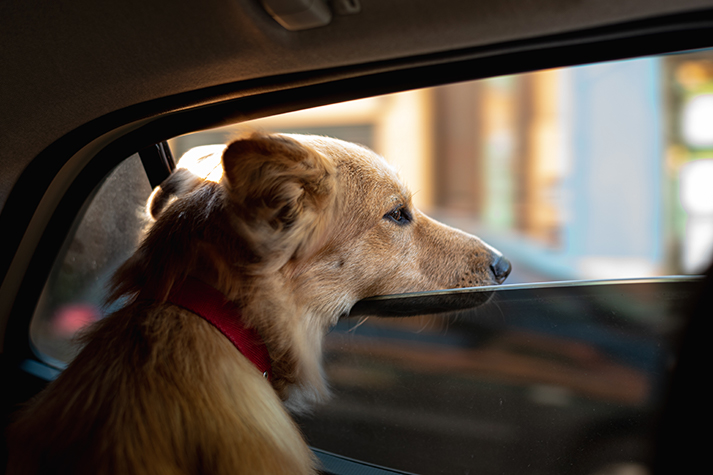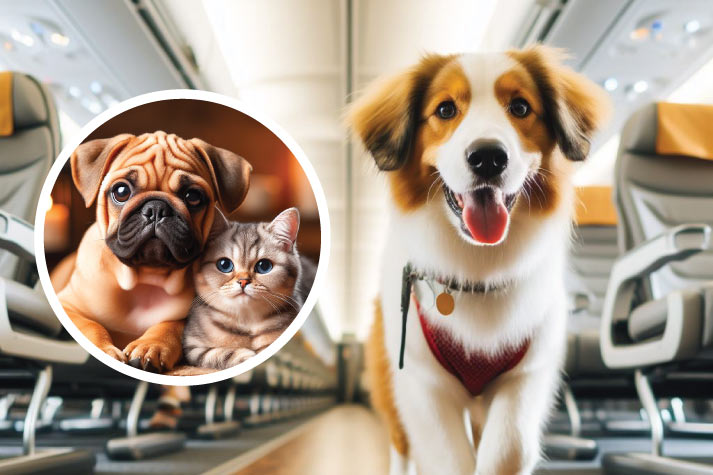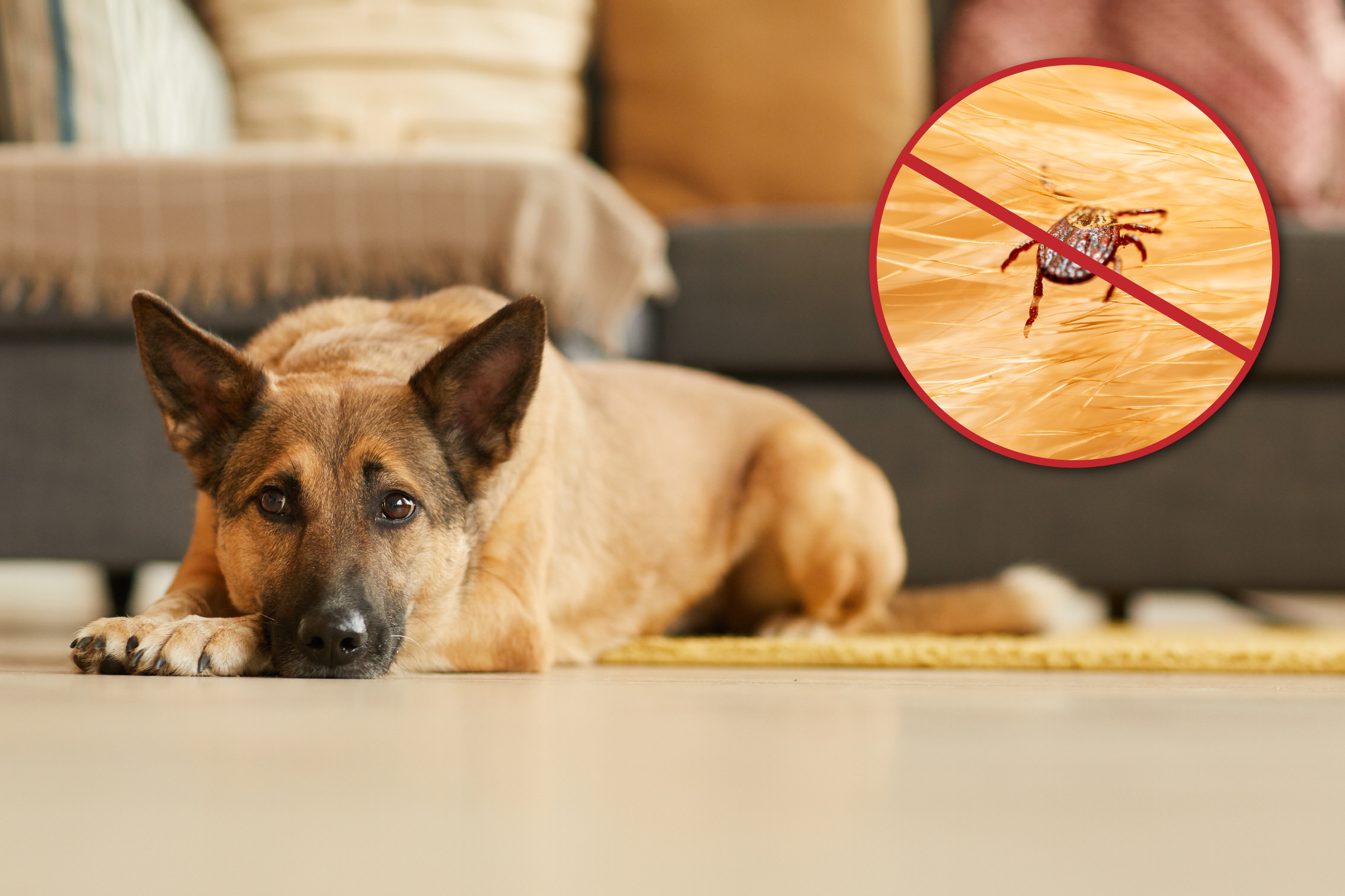
19 Feb
How to Manage a Motion-Sick Pet While Travelling
Watching your pet suffer from a sickness or illness is a heartbreaking sight. The last thing a pet parent wants is for their pet to fall ill, especially while travelling. But, if your pet does end up falling sick while travelling, what should you do? To help pet parents prepare for their pet travel, we've highlighted the common issues one faces when travelling with dogs and cats, the probability of sickness, and how you can take positive steps to help minimize the effects of any sickness. Being informed is one of the best things you can do before travelling, as the knowledge of how to react to an adverse situation can oftentimes make all the difference.
How Can Travelling Affect My Pet?
The are a few reasons why your pet dog or cat may be feeling under the weather, but the first thing you need to do is make sure you’re able to recognize the symptoms and cause of the sickness to treat it properly. You won’t be able to diagnose an issue if you do not recognize the signs, after all.
When embarking on pet travel, the most common causes of sickness are motion sickness, stress, or anxiety. Much like humans, animals can experience motion sickness while on the road too, and since you'll inevitably have to drive someplace with your pet in the car, it is best to be prepared for the eventuality.
Once you're out of the car, you'll still have a few things to deal with. Once they experience motion sickness, many pets will suffer from vomiting, nausea, and loss of appetite, as well as higher levels of stress and anxiety. Given that these are the prevailing conditions you’re likely to face when travelling with your pet, here are a few tips on how you can help your pet feel a little better.
How Can I Help My Pet with Motion-Sickness?
Having experienced motion sickness firsthand, we can safely say that it is a thoroughly unenjoyable experience. However, that doesn’t mean that you cannot travel with your pet or that you must leave your buddy behind while you’re out and about. There are ways you can prevent and manage travel sickness in your pet dog or cat while travelling.
The first way to do this is prevention, which means being able to identify the signs that your pet is experiencing motion sickness. To put it briefly, motion sickness occurs when there is a variation between what they’re seeing and what signals related to their movement are being sent to their inner ear. When these are out of sync, your pet’s brain receives conflicting messages, which leads to the feeling of being motion sick.
Consistent and persistent motion sickness could also be a signifier of an underlying medical condition. Therefore, you should consult your vet and schedule an examination before any form of travel so you can rule out any underlying conditions as the cause of your pet’s motion sickness.
There are a few indicators of motion sickness you should look out for:
- Excessive drooling
- Meowing/howling
- Pacing/restlessness or extreme lethargy/inactivity
- Toilet troubles in the car
- Licking
- Excessive panting
- Vomiting
- Trembling
Motion sickness does not mean that your pet cannot travel; however, it does mean that the problem must be addressed before they can travel comfortably. You’ll need to desensitize your pet, meaning you take small steps towards getting your pet used to the car, then stay for longer durations in the car, before making short trips and finally moving on to full-length journeys with your pet in the car. Gradually increasing distances will help desensitize your pet and help their bodies be comfortable in the environment of a travelling vehicle.
You should also use positive reinforcement while desensitizing your pet to help build a positive relationship between your pet and your vehicle. You can reward your pet with love, affection, toys, or treats for positively interacting with your car. If you build a positive relationship between them, there may come a time when your pet is willingly and happily jumping in the car for your trip.
If your pet is struggling with motion sickness despite all your steps, contact your vet. They can perform an examination and determine the cause of your pet's persistent motion sickness, and prescribe an appropriate treatment for travel sickness that could improve their experience considerably.
How can I Help my Pet with Stress & Anxiety?
Stress and anxiety are two things that will adversely affect every aspect of your pet’s life, including pet travel and journeys by road. Much like humans, each pet is different psychologically and so it is difficult to prescribe a generalized solution to stress and anxiety. However, identifying the signs can help you manage and diagnose the issue efficiently.
Here are a few symptoms of stress and anxiety in pets:
- Intense barking/howling/whining/meowing
- Excessive panting
- Excessive drooling/licking
- Blinking rapidly
- Wide eyes/dilated pupils
- Ears pinned back
- Tail tucked between their legs
- Reduced appetites
- Nausea/Vomiting/Diarrhea
- Escape attempts
- Being moody or intolerant around people
There are numerous reasons for your pet to be stressed, especially if it is their first trip or if they travel infrequently. This is especially likely if you have a reactive pet who is over-stimulated when presented with a trigger (new sights/sounds/smells). A nervous and stressed-out pet will be incredibly unhappy; if you’re seeing signs of anxiety, try to figure out what is triggering your pet, and try to make the journey itself more bearable for your pet.
First, you should rule out any prevailing or underlying medical conditions, which means visiting your vet and getting a check-up. Once you have a clean bill of health, you can ask your vet to prescribe medications to help your pet stay calm when outdoors and overstimulated. You can also take steps to create a comfortable and relaxing environment for your pet when away from home; When in a car, for example, you can use items like your pet’s favourite toy or blanket which have a familiar scent and use their pet crate when on the road to give them a familiar view when travelling. Like the desensitization process for motion sickness, try to desensitize your pet and travel gradually to help alleviate their anxiety.
Should I Leave My Pet at Home?
This is a difficult question to answer, as while nobody wants to ever leave their pet behind or exclude them from a day’s activities, not every pet enjoys travel and not every pet is suited to it. If you have tried everything and your pet still struggles with travel, it might be time to either desensitize your pet and try conditioning them or hire a pet sitter while you're travelling. Remember, your pet's health is the most important thing, and if their bodies refuse to travel incident-free, it might be a good idea to consult your vet and listen to their judgement.
How Can I Manage Injuries or Sickness While on Pet Travel?
- Know Your Pet & Their Behaviour: You are the only one who truly knows your pet and their behaviours. Regardless of how much generic advice you receive, you’re the only one who really knows your pet. Knowing your pet and their behaviour is crucial; if you’re walking around, will your pet try to eat everything on the ground and around them? will they be sick while driving? Will they react when faced with other pets? All of these are questions that only the pet parent can answer, so the very first step to manage your pet’s sickness while travelling is to know your pet and be able to identify signs of trouble.
- Pack a First-Aid Kit: A first aid kit is a must while travelling. Small scrapes and cuts will likely happen, and you can prepare for minor sicknesses such as itchy skin or an upset stomach by consulting your vet and acquiring the necessary medication ahead of time. As your pup can lash out at anyone attempting to administer care due to their distress, carry a muzzle or some restraint for the safety of your dog and those around them. If your pet suffers from any chronic illnesses, source the medication for the same and carry them with you while travelling.
- Schedule for a Vet Visit: We've said it before, and we'll say again that vet visits are crucial for your pet. Vets can examine, diagnose, and treat any conditions your pet may have, and since your pet should ideally be healthy enough to travel, the vet visit is a preparation that you should always make, especially before a long journey.
- Be Aware of the Risks: Before your travels, do your research, and remember your preparations and emergency contacts. Each area is unique and contains a plethora of flora, fauna, and environment that you don’t know how your pet will react to, so it is best to prepare and be aware of the risks involved with travelling to your destination. A vet is your best source of help if your pet falls sick, and while they are extremely understanding in case of an emergency, it is best to call ahead and notify them of your emergency for care.
To conclude, while it is impossible to guarantee your pet stays healthy during your travels, there are numerous preparatory steps you can take to ensure that your travel is smooth and safe. When travelling with a pet, always introduce them to the vehicle gradually before setting off on shorter trips. Slowly work your way up the trip durations until your pet looks forward to trips in the car.
When planning a trip, be aware of the potential risk factors on your route and how you’ll tackle the issue on the road. Finally, regular vet check-ups are important, and should not be skipped to ensure your pet is in good shape before travelling. Remember while pet travel is joyous, it should only be attempted if your pet is happy and comfortable. If you have any reservations regarding the process but need to relocate with your pet, you can always hire a professional relocator to bear the burden for you.






AUTHOR’S BIO
Carry My Pet
Passionate pet enthusiasts and globetrotters, dedicated to easing furry friends' journeys worldwide. Penning tales of compassion at CarryMyPet, where every relocation is a tail-wagging adventure.